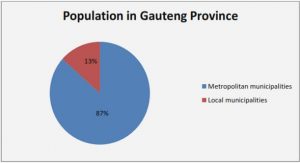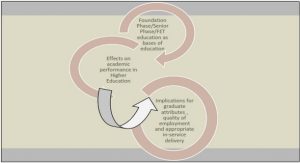Get Complete Project Material File(s) Now! »
Changing times and laws
In May 1941, Congresswoman Edith Nourse Rogers introduced a house resolution (H.R. 4906) to establish a civilian organisation known as the Women’s Army Auxiliary Corps (WAAF) (Douglas, 1991). This draft legislation was not considered until after the attack on Pearl Harbour. Finally, the Rogers Bill (see Appendix A) was passed on 15 May 1942 as Public Law 77 – 554 (Marden, 1990). By June 1942, both the United States Army and Navy had agreed to the use of women in the military in limited capacities. The Navy WAVES, Women Accepted for Voluntary Emergency Service, was authorized in July 1942 through the establishment of the Women’s Reserve, Public Law 689, H.R. 6807 (Women of the Waves, 2001:1). In November 1942, the Coast Guard followed suit, and in February 1943, the Marine Corps established its Women’s Reserve. On 3 July 1943, the army converted the Women’s Army Auxiliary Corps (WAAC), into an official branch – the Women’s Army Corps (WAC). All WAAC’s were given the choice of joining the army as a Women’s Army Corps, or returning to civilian life (Woodson Research Centre, 1999-2000). The newly reorganized Air Transport Command (ATC) was headed up by Brigadier General Harold George and Colonel William Tunner. Pilots were extremely scarce and in great demand. In a chance meeting with the newly arrived deputy chief of staff, Robert Love, Colonel Tunner first had the idea to use women pilots when Major Love mentioned that his wife made a daily flight to commute from Washington, D.C. to Baltimore (Douglas, 1991). Colonel Tunner arranged to meet with Nancy Harkness Love and outlined her proposal to recruit outstanding women pilots in a report to General George on 18 June 1942 (Van Wagenen Keil, 1979:104).
Founding The Ninety-Nines, Inc.
On 9 October 1929, Fay Gillis, Margorie Brown, Frances Harrel and Neva Paris sent a letter to 117 women pilots to invite them to attend a meeting with the aim of establishing an organisation to promote mutual support as well as the advancement of aviation. (A transcript of the original letter can be found in Appendix D.) A group of 26 women gathered at Curtis Field, Valley Stream, Long Island, New York, on 2 November 1929. The meeting was held in a hangar, with tea served from a toolbox wagon on wheels (the Ninety-Nines, Inc., 1999). It was agreed that membership was to be open to any licensed female pilot. Of the 117 women who had been invited, 99 had responded to the first call for members. After much discussion, it was decided that the name of the group be taken from the sum total of charter members. Thus, the group was first the Eighty-Sixes, then the Ninety-Sevens, and finally the Ninety-Nines (The Ninety-Nines, Inc., 1999). In 1931, Amelia Earhart became the group’s first elected president. The Ninety-Nines, Inc. is registered in the State of Delaware as a non-profit, charitable membership corporation, holding 501c(3) U.S. tax status. In 1965, the Ninety-Nines, Inc. opened its headquarters building at the Will Rogers Airport in Oklahoma City, Oklahoma, and in 1988, a second, two-storey building expanded the facility to twice its original size. The Ninety-Nines, Inc. is governed by a nine-member board of directors elected by its membership. The President, Vice President, Secretary, Treasurer, four Directors and the immediate Past President serve two-year terms of office. An Executive Director, Headquarters Secretary and Bookkeeper are responsible for the daily operations of the organisation. Membership currently stands at over 6 500 licensed women pilots in 35 countries (The Ninety-Nines, Inc., 1999).
CHAPTER 1: ORIENTATION AND PROBLEM STATEMENT
1.1 PROBLEM IDENTIFICATION
1.2 RATIONALE AND MOTIVATION
1.3 RESEARCH GOALS
CHAPTER 2: WOMEN IN AVIATION
2.1 INTRODUCTION
2.2 WOMEN IN AVIATION HISTORY
2.3 INVOLVING WOMEN IN AVIATION
2.4 LEGISLATION: AFFIRMATIVE ACTION AND EQUAL OPPORTUNITY LAWS
2.5 WOMEN IN OTHER AVIATION AND AEROSPACE CAREERS
2.6 INTEGRATED CONCLUSION
CHAPTER 3: ATTITUDES, STEREOTYPES AND PREJUDICES REGARDING WOMEN IN AVIATION
3.1 INTRODUCTION
3.2 ADDRESSING THE MYTHS AS TO WHY WOMEN SHOULD NOT FLY
3.3 ADDITIONAL RESEARCH ADDRESSING WOMEN IN AVIATION
3.4 THE APPLICATION OF CRM IN ADDRESSING ATTITUDES, STEREOTYPES AND PREJUDICES WITH REGARD TO WOMEN IN AVIATION
3.5 INTEGRATED CONCLUSION
CHAPTER 4: ATTITUDES, STEREOTYPES AND PREJUDICES: THEORETICAL CONCEPTS
4.1 INTRODUCTION
4.2 DEFINING ATTITUDES
4.3 COMPONENTS OF ATTITUDES
4.4 SOURCES OF ATTITUDES
4.5 THEORIES OF ATTITUDE FORMATION AND CHANGE
4.6 THE FUNCTIONS OF ATTITUDES
4.7 STEREOTYPES
4.8 PREJUDICES
4.9 ATTITUDE MEASUREMENT
4.10 INTEGRATED CONCLUSION
CHAPTER 5: RESEARCH DESIGN
5.1 INTRODUCTION
5.2 THE FRAMEWORK FOR QUESTIONNAIRE DESIGN
5.3 PRELIMINARY CONSIDERATIONS
5.4 CLASSIFICATION MODEL
5.5 DATA COLLECTION METHODS
5.6 MEASUREMENT AND MEASUREMENT SCALES
5.7 WRITING EFFECTIVE QUESTIONS
5.8 POTENTIAL SOURCES OF ERRORS IN RESEARCH DESIGN
5.9 VARIABLES
5.10 RESEARCH PRACTICES
5.11 RESEARCH HYPOTHESES
5.12 TYPES OF RESEARCH QUESTION
5.13 VALIDITY
5.14 RELIABILITY
5.15 SENSITIVITY
5.16 INTEGRATED CONCLUSION
CHAPTER 6: RESEARCH METHODOLOGY
6.1 INTRODUCTION
6.2 RESEARCH STRATEGY
6.3 THE QUESTIONNAIRE
6.4 THE POPULATION
6.5 STATISTICAL ANALYSIS
6.6 INTEGRATED CONCLUSION
CHAPTER 7: RESULTS
7.1 INTRODUCTION
7.2 FACTOR ANALYSIS
7.3 STRUCTURAL EQUIVALENCE
7.4 ANALYSIS OF ITEM BIAS
7.5 RELIABILITY AND ITEM ANALYSIS
7.6 SCALE NAMING/DESCRIPTION
7.7 ANALYSIS OF VARIANCE
7.8 MULTIPLE ANALYSIS OF VARIANCE (MANOVA)
7.9 INTEGRATED CONCLUSION
CHAPTER 8: CONCLUSIONS AND RECOMMENDATIONS
8.1 REVIEW OF THE RESEARCH
8.2 CONCLUSIONS
8.3 RECOMMENDATIONS






